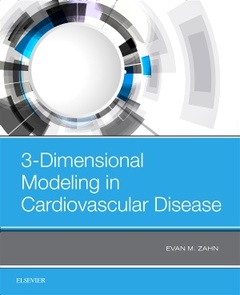Description
3-Dimensional Modeling in Cardiovascular Disease
Coordinator: Zahn Evan M.
Language: English
Subjects for 3-Dimensional Modeling in Cardiovascular Disease:
214 p. · 19x23.3 cm · Paperback
Description
/li>Contents
/li>Biography
/li>
Written by physicians and surgeons, imaging specialists, and medical technology engineers, and edited by Dr. Evan M. Zahn of the renowned Cedars-Sinai Heart Institute, this concise, focused volume covers must-know information in this new and exciting field. Covering everything from the evolution of 3D modeling in cardiac disease to the various roles of 3D modeling in cardiology to cardiac holography and 3D bioprinting, 3-Dimensional Modeling in Cardiovascular Disease is a one-stop resource for physicians, cardiologists, radiologists, and engineers who work with patients, support care providers, and perform research.
- Provides history and context for the use of 3D printing in cardiology settings, discusses how to use it to plan and evaluate treatment, explains how it can be used as an education resource, and explores its effectiveness with medical interventions.
- Presents specific uses for 3D modeling of the heart, examines whether it improves outcomes, and explores 3D bioprinting.
- Consolidates today's available information and guidance into a single, convenient resource.
2 The Technical Basics of Cardiac 3D Printing
3 From Multiplanar Imaging to Physical 3D Models: 3D Printing as an Adjunct to Congenital Heart Surgery
4 3D Modeling as an Adjunct to Complex Congenital Catheter Interventions
5 Instructional Case Examples Utilizing Three-Dimensional Modeling in Congenital Heart Disease
6 Is There Role for 3D Modeling in Planning Acquired Heart Disease Surgery?
7 3D Modeling as a Tool for Structural Heart Interventions
8 The Role of 3D Modeling in the Treatment of Advanced Heart Failure
9 Current Challenges to the Use of 3D Modeling as a Standard Clinical Tool
10 Does 3D Modeling Alter Clinical Outcomes? What Are the Data?
11 3D Modeling as a Medical Education Resource, Simulation, and Communication Tool
12 Computational Modeling and Personalized Surgery
13 3D Bioprinting: What Does the Future Hold?




